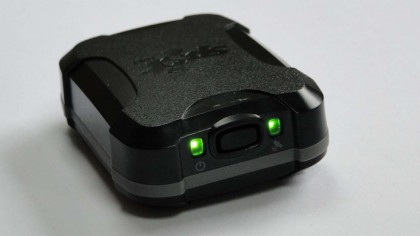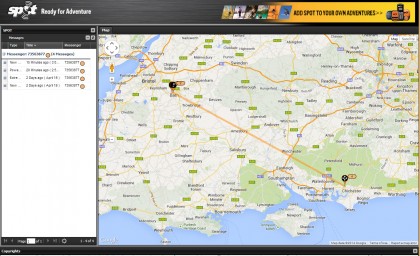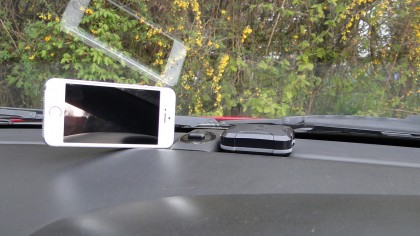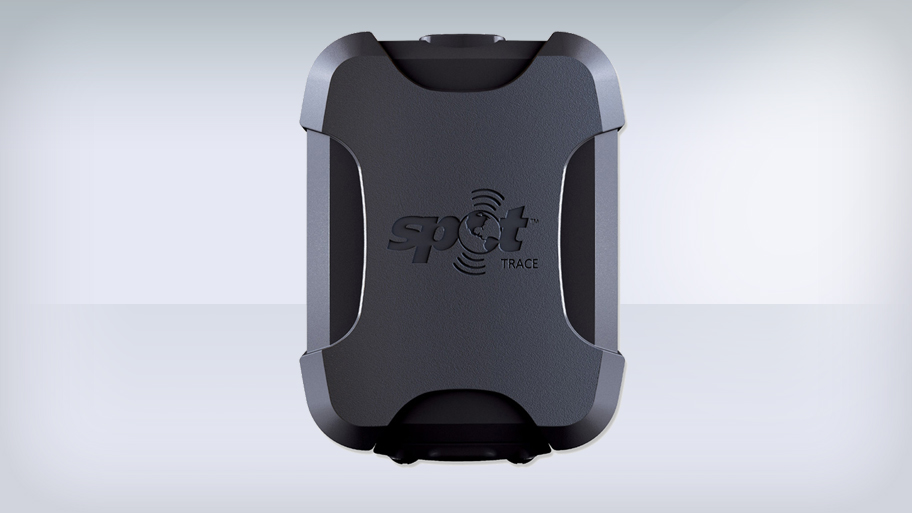TechRadar Verdict
It's expensive to use and can be tricky to set up, but still a very handy little tracker if you really need to keep an eye on your new car.
Pros
- +
Very compact
- +
Wide range of uses
- +
Almost-instant alerts via email
- +
Long battery life
- +
Online tracking
Cons
- -
Expensive service plans
- -
Doesn't work out of GPS range
- -
SMS alerts not available in UK
- -
Can be tricky to install and set up
- -
Accuracy not impeccable
Why you can trust TechRadar
Own something valuable and potentially mobile and prone to theft? Wouldn't it be nice to be able to track its position and even receive automated alerts within moments should it unexpectedly move position?
Enter the Spot Trace personal GPS tracking device. On paper, it does all that and more.
It's a flexible, multi-purpose GPS tracking device that's about the size of a box of matches and can be attached to a wide range of objects. It has both GPS tracking and accelerometers for motion detection and offers a number of methods for sending automatic alerts including email and text message.
It's also possible to imagine plenty of additional uses beyond theft alerts and tracking. Tracking cars, boats and other mobile machines in the event of a theft are obvious usages.
You could, theoretically, use it to make sure employees or offspring go where they are supposed to should they borrow a personal or company vehicle, for instance (though there may be data protection implications regards tracking employees).
Anyway, it certainly seems like a potentially useful gadget. Time to find out if it's actually any good.

Features
The basics of the Spot Trace involve a small black box containing the GPS hardware and motion detection. It's powered by four standard AAA batteries.
Four Energizer Lithium triple-As are provided, delivering up to 18 months battery life. The reality may be more complex (and much shorter) than that. More on that subject in a moment.
You also get both a mounting cradle with a quartet of sharp screws and a few adhesive pads. That gives you the option of attaching the cradle permanently or simply sticking the device on in a more temporary manner.
Size wise, we're talking 6.83cm long, 5.13cm wide and 2.14cm deep. So about the size of a plump box of pocket matches.
It's a very simple object with a single power switch and a pair of LEDs to show that the device is operating and has acquired GPS location. The latter is essential when doing the initial install to ensure that it will function correctly.
As compact as that sounds, it's worth remembering that this is primarily a GPS device and requires line of sight to function.
Global Telesat Communications, which manufacturers the device, says it can pick up satellites through fibreglass, glass and fabric. But it wont operate through metal. That places some limitations on where you can locate the device.
In standard battery-operated config, it's waterproof up to 1m for 30 mins. A waterproof line-in power cable is available separately.
Once configured, Spot Trace automatically sends a text and or email with your asset's GPS coordinates when movement is detected. You can also view and track online via a web interface. This can be shared both publicly and via a password-protected web page.
Various alerts can be set up, including for movement, if the device has been turned off or if the battery is running low.
What's more, you can manage and track multiple devices from one account, which is handy.
The core functionality works via satellite, including both GPS tracking and sending alerts. So the device does not require or indeed itself use an internet connection, allowing you to track objects beyond cellular range, for instance on the open ocean.
If all that seems like a good deal for £102/$119/€125, here's the snag. You'll need a service plan to ue the device.
One year costs $99.99 in the US with the Extreme Tracking upgrade another $99.99 - expect the UK price to mirror those in pounds. EU pricing is €119, again annually.
The basic plan allows tracking every five, 10, 30 or 60 mins. The extreme tracking plan reduces the intervals to 2.5 mins. The additional charge presumably reflects the cost of more frequent access to the communications satellites.

Performance
Both initial set up and the various web-based interfaces are a little confusing. The overall feel is more 'pro' than 'consumer' in that regard, although it's not entirely impenetrable.
A function of that lack of clarity is that we weren't sure during testing whether the device supported being attached to an object that was located out of satellite range.
In other words, can you use the Spot Trace on a car in a locked garage and rely on it to wake up should the car leave the garage and start moving?
It turns out the answer is no. The device will power down if left out of satellite range for an extended period.
With that limitation noted, how does the Spot Trace work for its intended purpose? For the most part, pretty well. During our testing, we received email alerts almost immediately once our test asset (a car) started moving.
What doesn't work so well, in the UK at least, is the SMS text message alert system. That's because it relies on email to SMS gateway services which, as far as we can tell, generally don't function in the UK.
Whatever, getting the text message alerts functioning on the EE cellular network in the UK defeated us. In the US, we imagine you wouldn't have such problems.
Satellite acquisition is another possible weak area. The issue here is having the device located where it can both function correctly and not be immediately detected by thieves. At the very least, some careful experimentation during initial installation is highly advisable.
If you're wondering about accuracy, it's in line with general GPS devices. Since it doesn't use roads as reference points, you'll find the accuracy isn't quite as good as an in-car satnav. In our testing, it was occasionally out by as much as 100m. But that's probably enough for the purposes of theft tracking.
As for battery life, that's tricky for us to judge definitively given the large time frames. However, its claimed the absolute worst case scenario for tracking a device that's constantly moving is three days. A tracker located with excellent line of sight to satellites and not moving could last for up to 18 months.

Verdict
For tracking certain objects in certain situations, the Spot Trace could be just the thing. In our testing, it worked as advertised, alerting us immediately when our test car was on the move and very likely tracking it accurately for recovery in a theft scenario.
At the moment, it feels like both a professional and US-centric device. The former means a little more hand-holding in use an configuration would help consumers. The latter can be felt in the lack of text message alert support for UK cellular networks.
On the installation side, you might find it tricky to locate the Spot Trace somewhere that evades the attention of thieves and also functions correctly.
Likely annual fees for the basic service plan of around $100/£100 also may or may not be a deal breaker. The bottom line then is that this probably isn't a device for easy use by general consumers . It's a little more involved than that. Put the work in in terms of setting it up, however, and it will likely deliver excellent tracking services.
Technology and cars. Increasingly the twain shall meet. Which is handy, because Jeremy (Twitter) is addicted to both. Long-time tech journalist, former editor of iCar magazine and incumbent car guru for T3 magazine, Jeremy reckons in-car technology is about to go thermonuclear. No, not exploding cars. That would be silly. And dangerous. But rather an explosive period of unprecedented innovation. Enjoy the ride.
